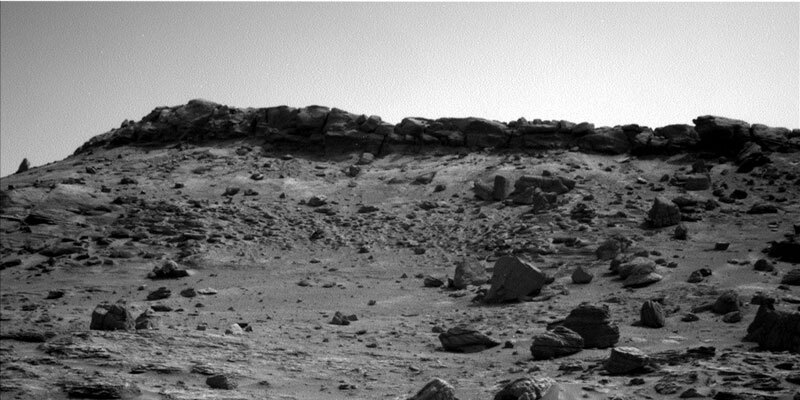2 min read

The Sol 3536 drive went well, getting MSL closer to the cliffs of interest toward the south of the rover. This one-sol plan includes both arm activities and another drive, squeezed into the time available before the mid-afternoon opportunity to "phone home." Mastcam will be busy at the start of the plan, measuring the amount of dust in the atmosphere above the rover, imaging the back side of the big Ilha Novo Destino boulder that was the subject of several investigations last weekend, and acquiring stereo mosaics of a bright outcrop named "Issineru," the layered bedrock capping the nearby "Bolivar" hill, and a boulder named "Arumim" that appears to have rolled down from Bolivar. Then ChemCam will fire its laser at a nearby bedrock outcrop target dubbed "Cerro Raya" and acquire an RMI mosaic of sedimentary structures in the Bolivar caprock seen along the skyline in this Navcam image. I supported the ChemCam team today by adjusting both target locations to ensure good coverage of interesting features. Mastcam will also acquire a stereo mosaic of the bedding exposed near the rover, which will include the Cerro Raya target, before taking a break while MAHLI takes images of the laser spots on Cerro Raya. There isn't enough time in this plan for DRT brushing of the MAHLI target, so we're hoping that ChemCam's laser will clean some of the dust off of Cerro Raya so that fine grains and micro-textures will be visible to MAHLI. After the arm is stowed, Mastcam and Navcam will image the workspace to look for material that may have spilled out of the drill assembly. Then a short drive toward the southeast is planned, followed by the standard post-drive imaging that will be used to plan Sol 3538 activities, and another MARDI twilight image of the ground behind the left front wheel.
Written by Kenneth Herkenhoff, Planetary Geologist at USGS Astrogeology Science Center







